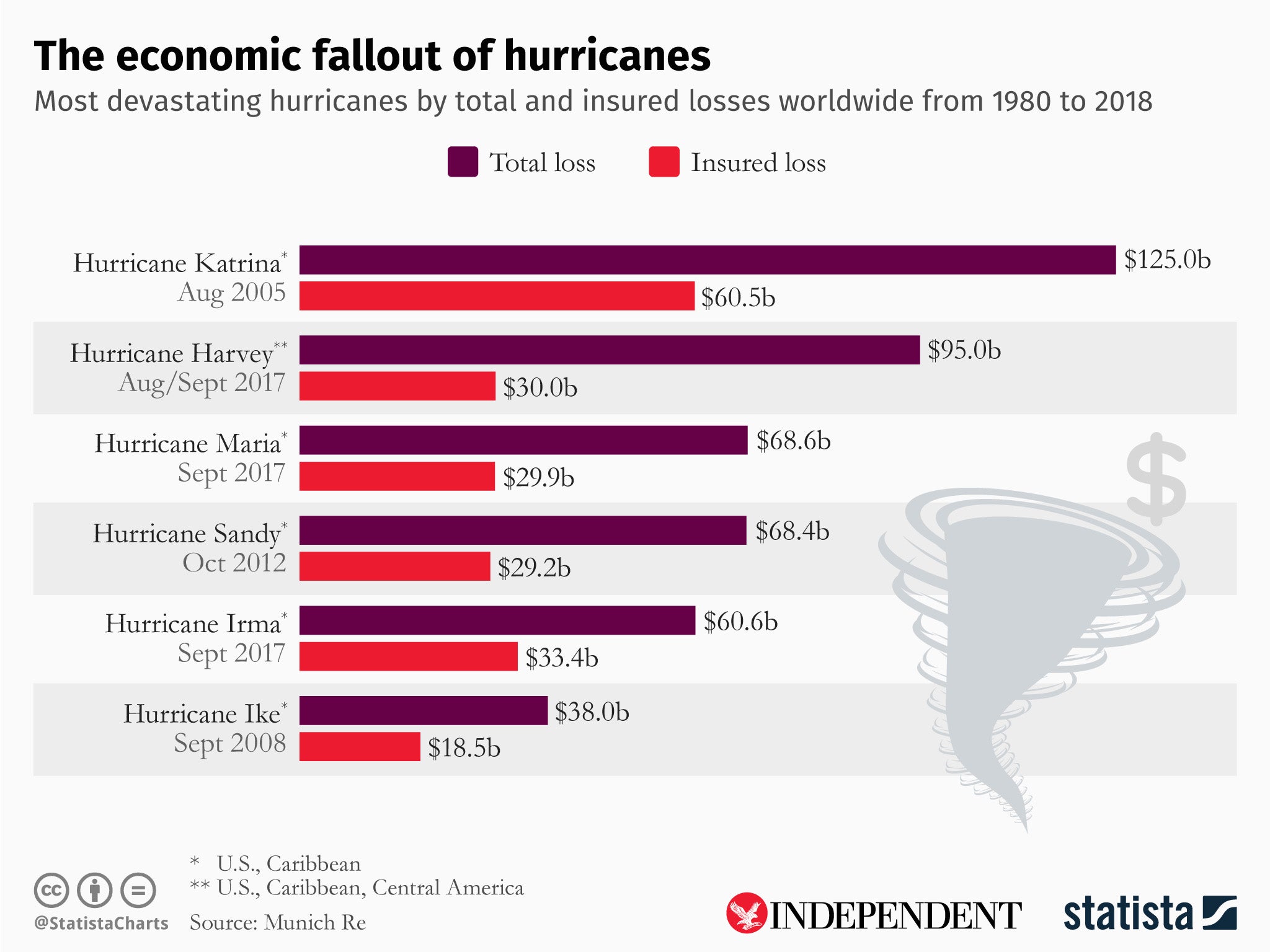Hurricane Dorian upgraded to maximum category five storm as it sweeps towards Bahamas
Caribbean islands and southeast coast of US braced for devastating winds and torrential rain
Your support helps us to tell the story
From reproductive rights to climate change to Big Tech, The Independent is on the ground when the story is developing. Whether it's investigating the financials of Elon Musk's pro-Trump PAC or producing our latest documentary, 'The A Word', which shines a light on the American women fighting for reproductive rights, we know how important it is to parse out the facts from the messaging.
At such a critical moment in US history, we need reporters on the ground. Your donation allows us to keep sending journalists to speak to both sides of the story.
The Independent is trusted by Americans across the entire political spectrum. And unlike many other quality news outlets, we choose not to lock Americans out of our reporting and analysis with paywalls. We believe quality journalism should be available to everyone, paid for by those who can afford it.
Your support makes all the difference.The National Hurricane Centre has upgraded Hurricane Dorian to a maximum category five storm, with winds of up to 160 miles per hour and a warning of catastrophic damage as it heads towards the Bahamas.
"Devastating hurricane conditions" are expected in the Abaco Islands and across Grand Bahama Island later in the day, the centre said.
Millions of people from the Bahamas to Florida, Georgia and the Carolinas are bracing themselves for the arrival of the storm, which is expected to bring fierce winds, pounding waves and torrential rain.
While Dorian's path is uncertain, there are indications it could veer sharply northeastwards after passing the Bahamas and track up the southeastern seaboard of the US.
But authorities are warning that even if its core fails to make landfall, the storm could still devastate coastal areas.
In a fresh warning, Ken Graham, director of the National Hurricane Centre, said the slow-moving storm could effectively stall while over the Bahamas for up to 24 hours, risking devastating damage to the islands and making predictions for its arrival on the US coast more complicated.
Donald Trump retweeted warnings from the National Hurricane Centre as well as from FEMA and the US Air Force Reserve's Hurricane Hunters twitter feed.
The path of the storm shifted slightly westwards, meaning Florida was once again in its path. A series of hurricane warnings and hurricane watches were issued for the area around Deerfield Beach, near Boca Raton.
After an earlier analysis that suggested the state may avoid the brunt of the damage, the governor of Florida, Ron DeSantis, had warned residents along that state's densely populated Atlantic coast: "We're not out of the woods yet."
He said the storm could "produce life-threatening storm surge and hurricane force winds".
"That cone of uncertainty still includes a lot of areas on the east coast of Florida and even into central and north Florida, so we are staying prepared and remaining vigilant."
Tourist hotels in the usually idyllic Bahamas remain closed, residents have boarded up their homes and officials have hired boats to move people from low-lying areas to bigger islands as the powerful hurricane approaches. Many are understood to be hunkered down in schools, churches and other shelters awaiting Dorian’s arrival later on Sunday.
Bahamas prime minister Dr Hubert Minnis warned residents on Twitter the coming hurricane is “extremely dangerous” and urged the people of Abaco and Grand Bahama “to get out of harm’s way”.
Small skiffs shuttled between outlying fishing communities and McLean’s Town on Saturday, a settlement of a few dozen homes at the eastern end of Grand Bahama, about 150 miles from Florida’s Atlantic coast. Most came from Sweeting Cay, a fishing town of a few hundred people about 1.5 metres above sea level.
“We’re not taking no chances,” said Margaret Bassett, a ferry boat driver for the Deep Water Cay resort. “They said evacuate, you have to evacuate.”

Over two or three days, the slow-moving hurricane could dump as much as one metre – or four feet - of rain, unleash devastating winds and whip up a dangerous storm surge, said meteorologist Ryan Maue, citing computer modelling.
The National Hurricane Centre, which is based in Miami, issued its own rainfall estimates for the northwestern Bahamas of 30 to 60cm, with isolated incidents of 76cm forecast. Its estimates for the coastal Carolinas were between 13 to 25cm of rain, with isolated cases predicted of 38cm.
“A prolonged period of life-threatening storm surge, devastating hurricane-force winds, and heavy rains capable of producing life-threatening flash floods are expected on the Abaco Islands and Grand Bahama through Monday, and a hurricane warning is in effect for these areas,” the NHC wrote on Twitter.

Join our commenting forum
Join thought-provoking conversations, follow other Independent readers and see their replies
Comments